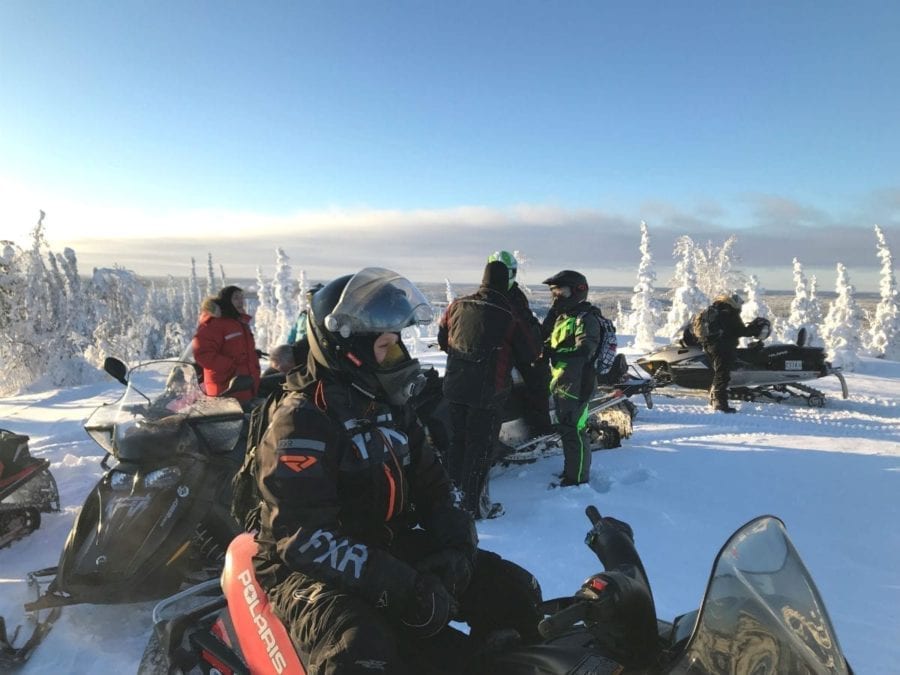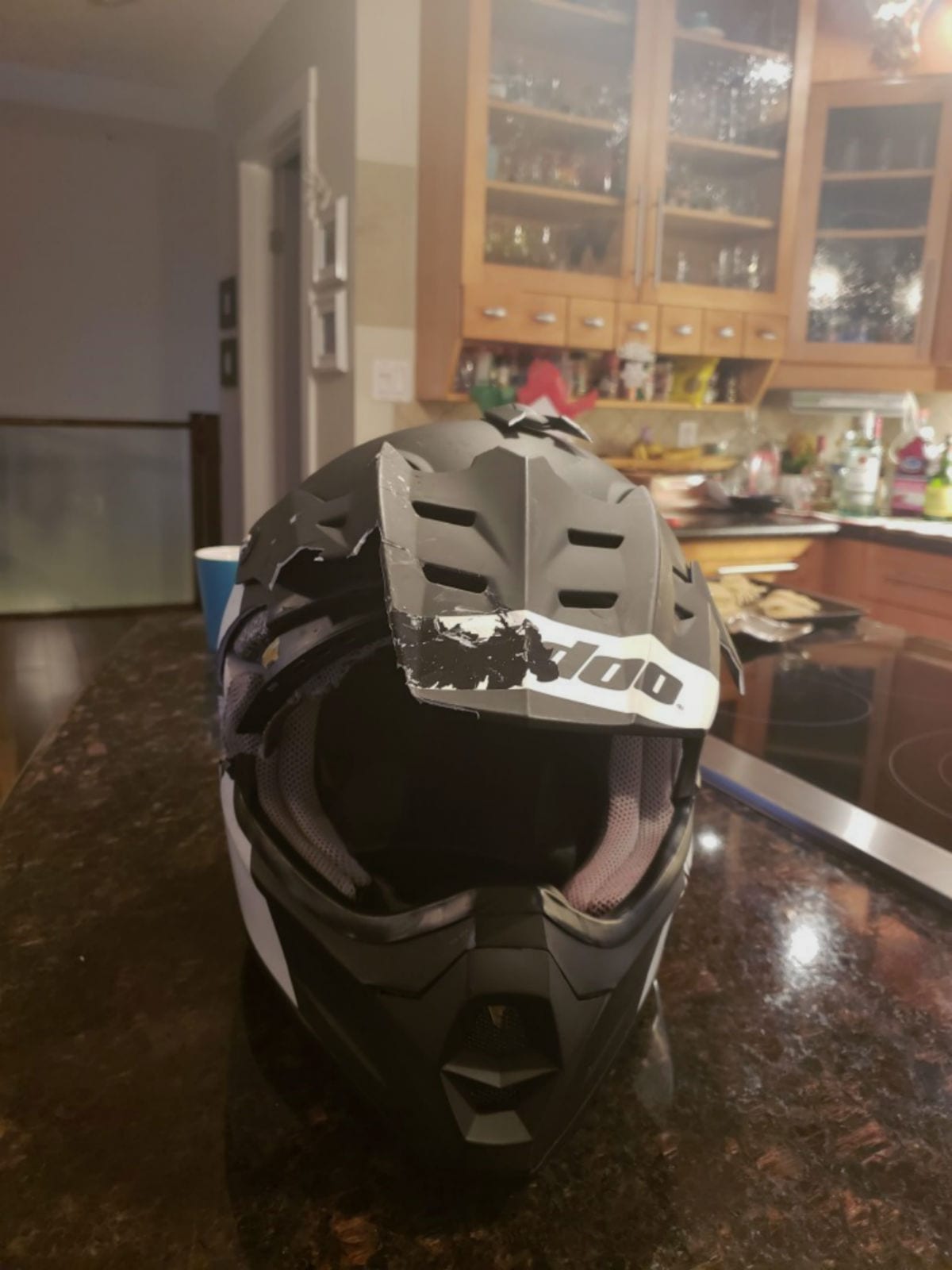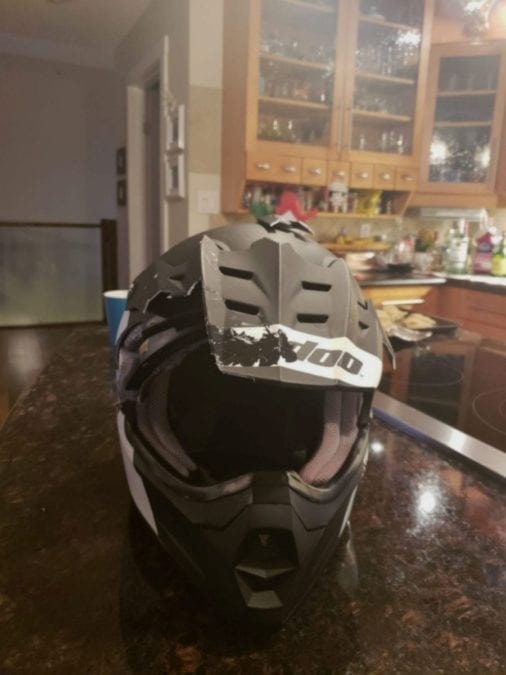For Northern drivers, there's more to road safety than putting your phone down, checking your mirrors and watching your speed.
In the winter months, knowing how to safely navigate an ice road or trail can be just as important as understanding the dos and donSA����Ӱ�Ӵ�ý�ts of driving on a city street.
So, how do experienced and rookie snowmobilers alike ensure they stay safe the next time theySA����Ӱ�Ӵ�ý�re out for a rip?

SA����Ӱ�Ӵ�ý�The main message is always just ride within your abilities,SA����Ӱ�Ӵ�ý� said Shaun Morris, president of the Great Slave Snowmobile Association.
Morris, who leads the non-profit organization which promotes safe and responsible snowmobiling in the capital, said safety starts with proper training.
Riders over the age of 12 can operate a snowmobile in off-road areas of the city if theySA����Ӱ�Ӵ�ý�ve completed a mandatory City of Yellowknife Snowmobile Safety Course, provided through Arctic Response.
SA����Ӱ�Ӵ�ý�If you put your kid through a course and they get a bit of hands-on teaching SA����Ӱ�Ӵ�ý� it can make a big difference,SA����Ӱ�Ӵ�ý� said Morris.
Morris encourages an early start to instill the importance of safety from the get-go.
SA����Ӱ�Ӵ�ý�The younger the better,SA����Ӱ�Ӵ�ý� said Morris.
Inspect your machine and ride prepared
Before heading out, always make sure your machine is running smoothly, that you've brought enough fuel and that you have a plan for where youSA����Ӱ�Ӵ�ý�re going, said Morris. The association teamed up with the city to compile a snowmobile SA����Ӱ�Ӵ�ý�survival kit,SA����Ӱ�Ӵ�ý� which recommends bringing the following items:
Survival kit
Paper (fire starter), whistle, multi-tool, lighter, extra gloves, GPS, snacks, matches, water bottle, emergency blanket, flashlight, first aid kit, flare, handsaw, trail marking tape and batteries. For your snowmobile, Morris and the city encourage riders to bring a jerry can, tow rope, a shovel, snare wire and a spare belt.
Snowmobilers, especially those heading out solo, should always let someone know where theySA����Ӱ�Ӵ�ý�re going and when they expect to be back. Try to travel in groups when possible, said Morris.
SA����Ӱ�Ӵ�ý�Not only is it safer but it also makes it more fun. There are times when people are going to go out by themselves and thatSA����Ӱ�Ӵ�ý�s when itSA����Ӱ�Ӵ�ý�s very important to let someone know roughly what route youSA����Ӱ�Ӵ�ý�re taking,SA����Ӱ�Ӵ�ý� he said.
Doing so will prevent SA����Ӱ�Ӵ�ý�Search and Rescue searching the whole Northwest Territories,SA����Ӱ�Ӵ�ý� in the event a snowmobiler goes missing, said Morris.
Off-road snowmobiling and city road snowmobiling
Whether youSA����Ӱ�Ӵ�ý�re on an ice road, trail or Franklin Avenue, a lot of the same safety precautions apply, said Morris.
SA����Ӱ�Ӵ�ý�ItSA����Ӱ�Ӵ�ý�s about keeping control of your speed and being aware of your surroundings, paying attention SA����Ӱ�Ӵ�ý� just like driving (a car).SA����Ӱ�Ӵ�ý� Snowmobilers, according to the city's guidelines, should also SA����Ӱ�Ӵ�ý�remember the braking limitationsSA����Ӱ�Ӵ�ý� of snowmobiles, keep as far to the right as possible when on city streets SA����Ӱ�Ӵ�ý� and definitely don't drive on sidewalks.
The same safety hazards are present, too.
SA����Ӱ�Ӵ�ý�Whether youSA����Ӱ�Ӵ�ý�re in town or not, ice conditions are very important,SA����Ӱ�Ӵ�ý� said Morris. SA����Ӱ�Ӵ�ý�This time of year most of the ice is going to be safe to drive on but youSA����Ӱ�Ӵ�ý�re still going to have places where you may have overflow, causing thin iceSA����Ӱ�Ӵ�ý� said Morris.
Morris said one of the biggest misconceptions regarding snowmobile safety is that SA����Ӱ�Ӵ�ý�people think during this time of year the ice is going to be safe no matter what. Ice is fluid, it changes.SA����Ӱ�Ӵ�ý�
The unpredictability of some trails also pose safety risks for snowmobilers. Last month, a 46-year-old man was killed after his snowmobile struck a snow-covered rock near Reid Lake.
Morris said those types of accidents can be combated by SA����Ӱ�Ӵ�ý�staying on the beaten path, trails that someone has already made.SA����Ӱ�Ӵ�ý�
But Morris said the leading cause for accidents and injuries is, and long has been, speed.
SA����Ӱ�Ӵ�ý�The biggest factor historically has always been speed SA����Ӱ�Ӵ�ý� travelling too fast and striking an object or losing control of the vehicle,SA����Ӱ�Ӵ�ý� he said.
SA����Ӱ�Ӵ�ý�A lot of people get on a snowmobile and get the need for speed, so watching your speed is very important,SA����Ӱ�Ӵ�ý� said Morris.
On city roads, riders cannot exceed 45 km/h even in the 70 km/h zones. For off-road riding, snowmobilers travelling in SA����Ӱ�Ӵ�ý�built up areas of the city,SA����Ӱ�Ӵ�ý� dubbed Zone SA����Ӱ�Ӵ�ý�ASA����Ӱ�Ӵ�ý�, must obey a 30 km/h. In non-built up areas, the speed limit is 70 km/h.

Morris says one lucky rider was saved by his helmet after striking a rock and flying over his handlebars. The rider hit his head on another rock before being struck by his own snowmobile from behind. The accident resulted in a broken nose and stitches, but as Morris says, "it would have been much worse if he wasn't wearing a helmet!
Always wear a helmet
Helmet use is mandatory and it could save your life. According to the city's website, only helmets with the following certification labels are acceptable: CSA D-230, DOT218 or SNELL M90.
Outside of the city, Morris said failing to wear helmets is the most common safety violation he sees.
SA����Ӱ�Ӵ�ý�Ride with other people as much as you can and if you donSA����Ӱ�Ӵ�ý�t know a lot of people, join the Great Slave Snowmobile Association and ride with us. ItSA����Ӱ�Ӵ�ý�s a great way for people who are new to town or new to snowmobiling to learn trails, and get to go out with other people,SA����Ӱ�Ӵ�ý� said Morris.
FACT FILE
Yellowknife offers many areas to snowmobile safely in the city, including most streets, highways and roads. But there are off-limits areas, including:
- Playgrounds, school play areas, parks or any area where a sign prohibits snowmobiling in the city.
- Downtown core streets: 48 Street, 54 Street, 49 Avenue, and 51 Avenue.
- The ski club trail system.
- The McMahon Frame Lake Trail system between the Hospital and City Hall and the Museum, or any board walk or stairs on this trail system.
- The Range Lake Trail system between Parker Recreational Field and the Center Ice Plaza.
- The children's sliding area in the open space at 55 Street between 50A Avenue and 51A Avenue.
- The area known as Bristol Pit.
Source: City of Yellowknife. Visit website for full list.

.png;w=120;h=80;mode=crop)

